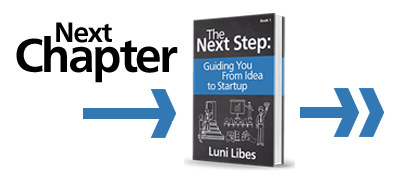With 7 billion neighbors, your invention is likely not unique.
It is rare to be the first company to solve a problem. While your solution may solve the problem in a unique manner, it is probably true that your potential customers are solving the problem today by some other means. The solution might be provided by a competitor or may involve a manual process the customers have built on their own. In some cases, the problem may be known but unsolved. In other cases, the problem may be both unacknowledged and unsolved.
QUESTION 29:
What other companies are solving the same problem?
Before you launch your company, it is important to research the competition. Look at the features and pricing of those offerings. For solutions created by the customers themselves, calculate how much it costs them to implement their solution. For unsolved problems, calculate the cost to the customer of ignoring the problem.
QUESTION 30:
How does my product compare to the competition? How does it compare feature by feature?
QUESTION 31:
How does the price of my product compare to the competition? Which pricing model are they using (high-price/high-service or low-price/low-service)?
Displacing an existing solution is difficult. A rough rule of thumb is that your product needs to be at least three times (if not ten times) better. “Better” means a combination of easier to use, faster to operate, and less expensive to buy.
This is true for competitive products as well as for problems that go unsolved today. The latter may seem counterintuitive at first, but realize that if the problem is not being addressed, it may be that the cost of buying or building a solution exceeds the cost of the problem.
Bird Watch—[Competition]: There are no other two-way radio-based tags for tracking wildlife, but there are other technologies used today. The tried-and-true method is to tag birds with colored leg bands and tag other wildlife with leg bands or ear tags marked with serial numbers. Tagged birds can be spotted in the wild via binoculars, while other animals are recaptured periodically and tracked using the unique serial number printed on the tag. In addition, animals can be tagged with broadcast-only radio-based tags, which periodically “ping” a signal that can be picked up by a researcher who is physically out in the field and used to calculate the location (and no other information) of the animal. None of these solutions allow for 24/7, automated tracking, and none can collect information about the interactions between tagged animals. Lastly, the competing “RFID” technology also combines serial numbers with radio-based tags but is incapable of measuring any data beyond the presence of the animal near a base station.
Concrete Battery—[Competition]: A handful of companies solve the problem of electricity storage by using flywheels. All these solutions use high-tech, high-cost processes to maximize the energy storage in a minimal amount of space. By optimizing for the smallest volume, they do not optimize for overall cost. None of these competitors have sold many flywheels. In addition, many groups are researching electricity storage options, such as storage of compressed air, hydrogen generation, and batteries. None of these have more than a few trial customers, and none are on track to be a lower-cost option to Concrete Battery’s solution.
Close to Home—[Competition]: The Federal Emergency Management Agency (FEMA) gives trailers to disaster survivors, free of charge. Dozens of companies are designing and selling post-disaster homes. None of these solutions is today sufficiently convenient and timely. None offer a simple, online solution with a broad selection of options and cost-effective choices.
Ensibuuko—[Competition]: There are no other software solutions in Uganda like Ensibuuko. There are a few other startups in Kenya and Tanzania with similar goals, but none that serve 500 or more savings co-ops. That thus means there is a “green field” opportunity for Ensibuuko, also known as a “blue ocean” opportunity. Either term simply means there is no big competition in the path to becoming the largest company in the market. However, that said, there is one other major competition that will no doubt get in the way. Tradition. SACCOs have been operating for decades with paper-based systems. Selling a SACCO on Ensibuuko requires selling them on giving up their tried-and-true methods for something new. Asking customers to change their behavior is rarely an easy process.
When researching your competition, be fair and open-minded. These products have customers, and thus cannot be all bad. These companies made it into the market and will exist after you follow suit. Focus not only on their weaknesses but also on their strengths. Adjust your minimal viable product design (Step 9), pricing (Step 11), and estimated opportunity size (Steps 10 and 12) accordingly.
With that open mind, learn from your competitors as much as possible. Dissect their website and other marketing materials to see how they talk about their target market. Review their pricing model. If possible, research their history to see how long ago they launched, how quickly sales have grown since then, and if they have received any outside funding to speed up that growth.
The most common mistake that first-time entrepreneurs make is to say that there is no competition for their idea. There is always competition. If you can’t find any companies, then question whether your potential customers care enough about the problem you are solving to pay for a solution. Your competition may simply be apathy.











